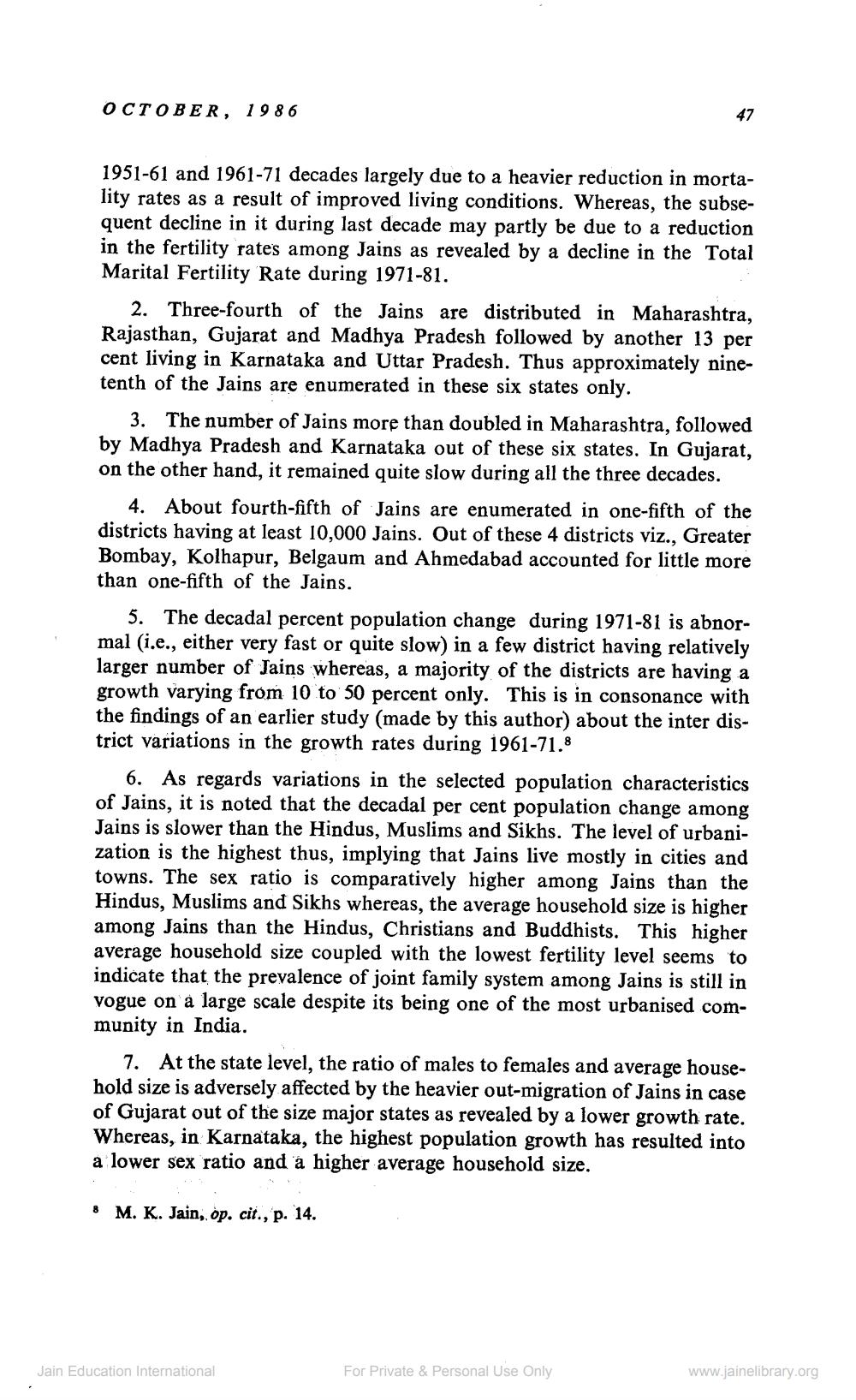________________
OCTOBER, 1986
1951-61 and 1961-71 decades largely due to a heavier reduction in mortality rates as a result of improved living conditions. Whereas, the subsequent decline in it during last decade may partly be due to a reduction in the fertility rates among Jains as revealed by a decline in the Total Marital Fertility Rate during 1971-81.
47
2. Three-fourth of the Jains are distributed in Maharashtra, Rajasthan, Gujarat and Madhya Pradesh followed by another 13 per cent living in Karnataka and Uttar Pradesh. Thus approximately ninetenth of the Jains are enumerated in these six states only.
3. The number of Jains more than doubled in Maharashtra, followed by Madhya Pradesh and Karnataka out of these six states. In Gujarat, on the other hand, it remained quite slow during all the three decades.
4. About fourth-fifth of Jains are enumerated in one-fifth of the districts having at least 10,000 Jains. Out of these 4 districts viz., Greater Bombay, Kolhapur, Belgaum and Ahmedabad accounted for little more than one-fifth of the Jains.
5. The decadal percent population change during 1971-81 is abnormal (i.e., either very fast or quite slow) in a few district having relatively larger number of Jains whereas, a majority of the districts are having a growth varying from 10 to 50 percent only. This is in consonance with the findings of an earlier study (made by this author) about the inter district variations in the growth rates during 1961-71.8
6. As regards variations in the selected population characteristics of Jains, it is noted that the decadal per cent population change among Jains is slower than the Hindus, Muslims and Sikhs. The level of urbanization is the highest thus, implying that Jains live mostly in cities and towns. The sex ratio is comparatively higher among Jains than the Hindus, Muslims and Sikhs whereas, the average household size is higher among Jains than the Hindus, Christians and Buddhists. This higher average household size coupled with the lowest fertility level seems to indicate that the prevalence of joint family system among Jains is still in vogue on a large scale despite its being one of the most urbanised community in India.
7. At the state level, the ratio of males to females and average household size is adversely affected by the heavier out-migration of Jains in case of Gujarat out of the size major states as revealed by a lower growth rate. Whereas, in Karnataka, the highest population growth has resulted into a lower sex ratio and a higher average household size.
8 M. K. Jain, op. cit., p. 14.
Jain Education International
For Private & Personal Use Only
www.jainelibrary.org




